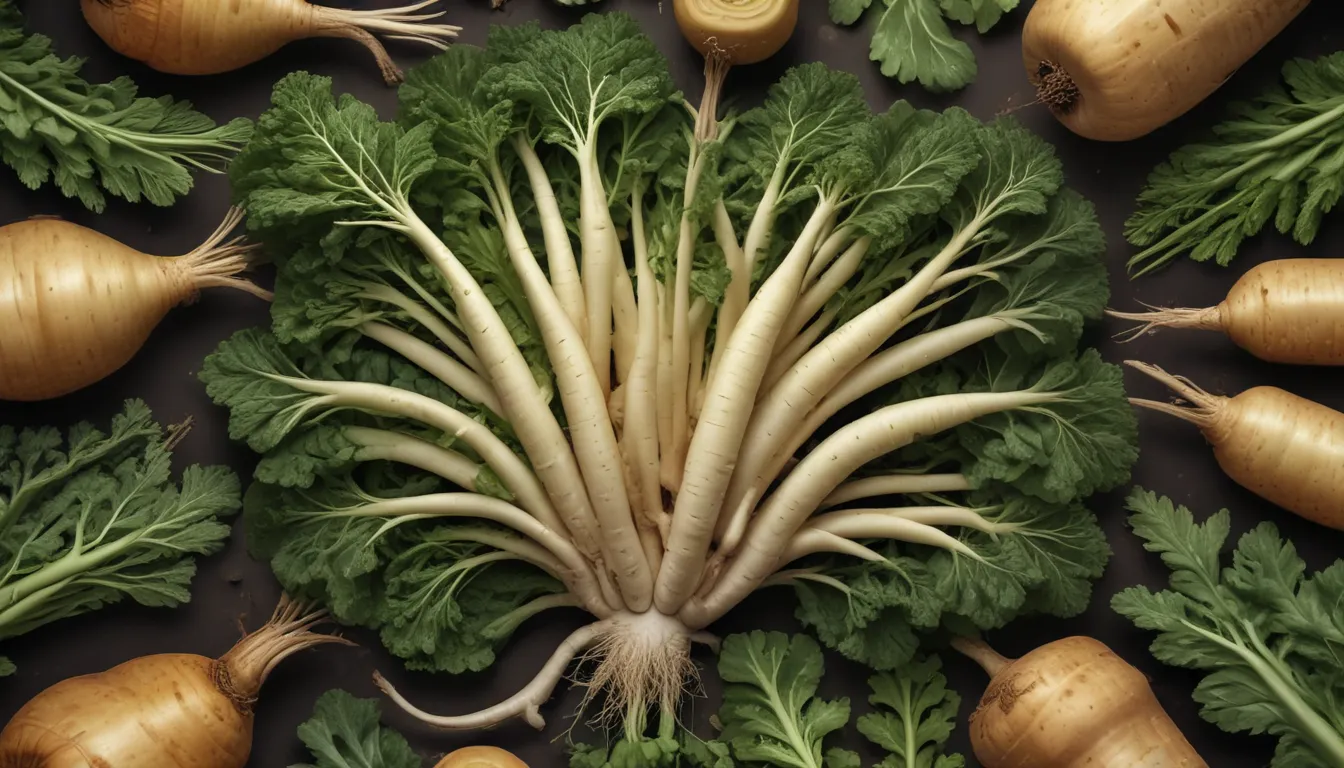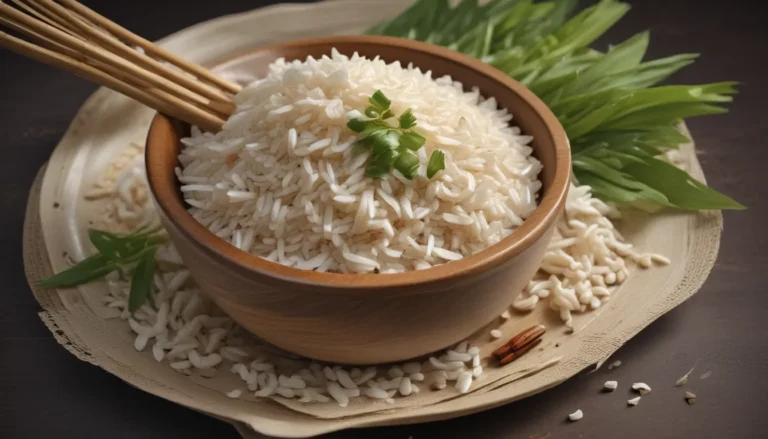The pictures in our articles might not always show exactly what the text is talking about. We use these images to make the article more interesting and eye-catching. They are there to add to the text, but not to replace it or show every detail.
Parsnips, often overshadowed by more popular vegetables, are a hidden gem in the culinary world. These beige root vegetables, part of the carrot family, offer a distinct sweet, nutty, and earthy flavor that has been enjoyed for centuries. Let's dive into 19 captivating facts about parsnips that will not only enlighten you but also inspire you to explore the incredible world of this underrated vegetable.
Exploring the Origins of Parsnips
Parsnips, scientifically known as Pastinaca sativa, originated from Eurasia and have a long history of cultivation dating back to ancient civilizations.
Historical Significance of Parsnips
Ancient cultures like the Romans and Greeks valued parsnips as a staple food source, highlighting their importance in early diets.
The Sweet and Nutty Flavors of Parsnips
Parsnips possess a unique flavor profile that is characterized by its sweetness and nuttiness, which intensifies after exposure to frost.
The Culinary Versatility of Parsnips
From roasting to boiling, mashing, or using in soups and stews, parsnips offer a versatile ingredient that adds depth and flavor to a wide range of dishes.
Nutritional Benefits of Parsnips
Packed with essential nutrients like fiber, vitamins C, E, and K, folate, and minerals such as potassium and manganese, parsnips offer both delicious taste and health benefits.
Why Choose Parsnips for a Low-Calorie Option
Watching your calorie intake? Parsnips are a great choice as they are relatively low in calories compared to other starchy vegetables, making them a healthy addition to any meal.
Embracing Parsnips for Winter Harvests
Late fall and early winter are the prime times to harvest parsnips when their flavors are at their peak, enhanced by the cold weather.
Exploring Parsnips’ Root Vegetable Relatives
Belonging to the same family as carrots and celery, the Apiaceae family, parsnips share close ties with these popular vegetables.
Unveiling Ancient Medicinal Uses of Parsnips
In ancient times, parsnips were utilized for their medicinal properties, believed to aid in digestive issues and alleviate symptoms of coughs and colds.
Discovering the Long Shelf Life of Parsnips
When stored correctly in a cool, dark place, parsnips can last for several weeks, making them a convenient vegetable to have on hand.
Harnessing the Antioxidant Power of Parsnips
Containing antioxidants that protect against harmful free radicals, parsnips promote overall health and reduce the risk of chronic diseases.
Celebrating Parsnips in Traditional Cuisine
Parsnips are beloved in traditional European dishes, from roasted parsnip soup to parsnip fritters, showcasing their versatility in culinary creations.
Indulging in Seasonal Delicacies with Parsnips
Associated with festive occasions, parsnips are frequently enjoyed during holiday feasts in the fall and winter seasons.
Leveraging Companion Planting Benefits with Parsnips
Parsnips serve as excellent companion plants for other vegetables like potatoes, peas, and tomatoes, aiding in pest deterrence and soil improvement.
Exploring the Variety of Parsnips
With different varieties like Hollow Crown, Gladiator, and All-American, parsnips offer a range of flavors and sizes to experiment with in recipes.
Embracing the Culinary Uses of Parsnips
A versatile alternative to potatoes, parsnips provide a lower glycemic index and a distinct taste that enhances the flavor of various dishes.
Enhancing Dishes with Parsnips as Garnish
The unique shape and texture of parsnips make them an ideal garnish that adds visual appeal to culinary creations.
Considering Allergy Concerns with Parsnips
While rare, some individuals may have allergies to parsnips, especially if they have sensitivities to carrots or celery. Caution is advised when consuming parsnips.
Global Enjoyment of Parsnips in Culinary Delights
From the United Kingdom's roasted parsnips to the United States' parsnip chips, parsnips are appreciated in cuisines worldwide for their unique flavor.
After exploring these enlightening facts about parsnips, you're now equipped with a deeper understanding of this versatile and nutritious vegetable. Whether you're a culinary enthusiast or simply curious about unique vegetables, parsnips offer a delightful experience worth savoring.
Conclusion: A World of Possibilities with Parsnips
In conclusion, parsnips are a culinary treasure waiting to be discovered. Their rich history, health benefits, and versatile uses make them a valuable addition to any diet. Whether you're drawn to their earthy flavor or intrigued by their nutritional content, parsnips offer a world of possibilities in the kitchen. Next time you're at the grocery store, don't forget to pick up some parsnips and embark on a culinary adventure with this underrated vegetable.
FAQs: Answering Your Top Questions About Parsnips
- What is a parsnip?
-
A parsnip is a root vegetable with a pale yellow or cream-colored exterior and a sweet, slightly nutty flavor, belonging to the carrot family.
-
How do you cook parsnips?
-
Parsnips can be cooked in various ways, including roasting, boiling, steaming, or sautéing, and used in a variety of dishes like soups, stews, and stir-fries.
-
Are parsnips healthy?
-
Yes, parsnips are nutritious, providing fiber, vitamins C, K, E, folate, antioxidants, potassium, and manganese, promoting overall health.
-
Can parsnips be eaten raw?
-
While parsnips are typically cooked before consumption, they can be eaten raw in salads or used as a crunchy snack when thinly sliced.
-
Are parsnips suitable for dietary restrictions?
-
Yes, parsnips are gluten-free and can be used as a substitute for potatoes in recipes, making them a versatile option for individuals with dietary restrictions.
-
How long do parsnips last?
-
Properly stored parsnips can last for several weeks in a cool, dark place or refrigerator, wrapped in a paper towel to maintain freshness.
-
Can parsnips be frozen?
-
Yes, parsnips can be frozen, though they may become slightly mushy after thawing. Blanching before freezing can help preserve their texture.
-
Are parsnips used in traditional dishes?
-
Yes, parsnips are commonly found in traditional dishes globally, including soups, stews, and roasted vegetable medleys, showcasing their culinary versatility.
-
Are there different varieties of parsnips?
-
Yes, parsnips come in various varieties like Hollow Crown, Javelin, and Gladiator, each offering unique characteristics for diverse culinary experiences.
-
Can parsnips be grown in home gardens?
- Yes, parsnips can be cultivated in home gardens with deep, loose soil and a cool climate, best planted early in spring or late summer for optimal growth.
By familiarizing yourself with these commonly asked questions about parsnips, you'll be better equipped to explore the joys of incorporating this versatile vegetable into your culinary repertoire. Enjoy the journey of discovering the wonders of parsnips and the delightful dishes they can inspire.






